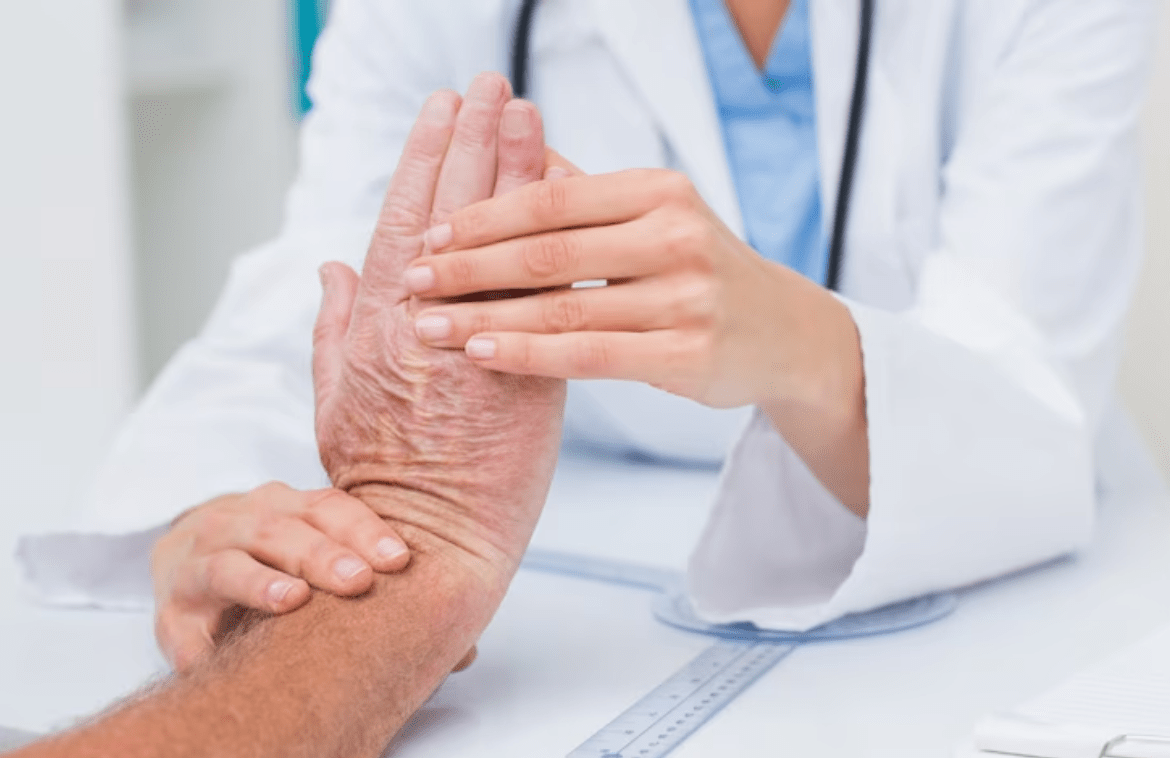Rheumatology-related health issues need medical attention. It is necessary to go by rheumatology symptoms as to when to consult a specialist or not. A primary healthcare provider will assist.
Rheumatoid arthritis (RA) happens to be a type of inflammatory arthritis that mainly affects the joints of the hands, wrists, as well as knees, nevertheless, any joint in the body can get affected.
RA involves the damaging inflammation that, left untreated, typically progresses. RA can lead to bone erosion and joint deformities. Early diagnosis and aggressive treatment help.
Table of Contents
Early Symptoms
RA, as an autoimmune disease, results from the immune system attacking healthy tissues.
For several people with RA, the initial symptoms are pain in one joint, or in one’s fingers, wrists, or toes, as well as ankles. It often affects people between the ages of 20 and 50, but even young children and older adults can suffer from symptoms that can be more severe in early-onset RA.
RA that begins after age 60 is known as late-onset RA. It can be less severe but can affect larger joints, such as the shoulders.
Joint pain, swelling, tenderness, stiffness, redness, and warmth are symptoms of RA.
Early signs and symptoms:
Fatigue: This is the body’s response to inflammation affecting the joints and other parts of the body.
Swollen joints: Thickening of the joint synovium (linings of the joints) and excess joint fluid.
Pain or stiffness in the same joints on both sides of one’s body: RA symptoms can be symmetrical (but may not necessarily be early on). RA affecting multiple joints without symmetry is known as asymmetric polyarticular form arthritis.
Weight loss: If one is experiencing unexplained weight loss without trying to eat better and be more active, then consult one’s healthcare provider.
Malaise: Fever can be there. It occurs due to the immune system turning against the body’s tissues and thus attacking the joints, as well as causing inflammation, pain, and swelling.
Advanced Symptoms
- Reduced range of motion: As RA advances, limited range of motion is there due to swelling as well as weakness in the joints. Balance, coordination, grip, as well as dexterity can be affected, and the person can develop a limp. The limp may be an early sign in a child.
- More severe stiffness: Joint stiffness is rather common in RA, especially in the morning hours.
- Impacts on larger joints: Beyond fingers and toes, he person can experience advancing symptoms in the larger joints, including the knees, ankles, elbows, wrists, hips, and shoulders.
- Redness: Redness can occur in the skin over inflamed joints and is due to dilated (widened) skin capillaries (tiny blood vessels) occurring due to nearby inflammation.
Other Rheumatology effects:
- Carpal tunnel syndrome: If RA affects the wrists, inflammation might eventually compress the nerve serving the hands as well as the fingers, known as the median nerve.
- Heart problems: RA inflammation can affect the heart and blood vessels.
- Anemia: Chronic inflammation in RA can cause the bone marrow to lessen the release of red blood cells (RBCs). The reduced number of RBCs causes anemia.
Treatment
Consult a healthcare professional as soon as possible if detecting RA helps. Treatment can be recommended. The primary care provider can suggest consulting a rheumatologist.

Early diagnosis and treatment can help manage RA and slow its progression, reducing the risk of complications. The condition will need to be managed for the rest of one’s life.
Managing one’s RA may also involve physical therapy, treatment for other health conditions, or, in fact, making lifestyle changes in order to improve one’s overall condition, like smoking cessation. In a few cases, surgery to treat RA (such as carpal tunnel release) may be required.
Conclusion
Rheumatology symptoms are good indications as to when treatment is required.

